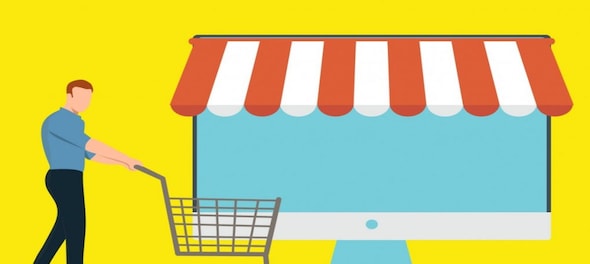
Not too long ago, stepping into a store, trying out several outfits, and purchasing other necessary items such as appliances, furniture, footwear, beauty products and more, was a routine. However, exceedingly, that scenario has changed.
Even though the penetration of online retail was quite high even before the outbreak of the COVID-19 pandemic, people started preferring the digital route more post-pandemic, thereby making technology the ultimate saviour.
In the COVID-hit new normal, companies in the retail sector were forced to embrace different selling patterns rather than just focusing on offline sales. Every other business suffered a great misfortune except for the firms that timely adopted the technology.
Undoubtedly, technology is rewriting the models of operations across every industry but the impact is greater in retail. Technological advancements are critical for retailers if they aim at remaining relevant and profitable in the current unprecedented times. It seems that the retail experience of the future is going to be moved by both physical innovations and advanced analytics to match the ever-changing expectations of the consumers while permitting retailers to reboot working and revenue models.
Also Read | Sale or no sale: When do you shop online?
Let’s delve deep to further explore how retail tech will shape the way people shop.
Omnichannel e-commerce
E-commerce, perhaps, has been one of the biggest changes for retailers that have helped earn more and grow successfully. The businesses no longer had to spend for the opening of physical stores to drive sales. Everything could be easily done online.
However, taking a step further, now more than ever, it seems necessary to adopt an omnichannel marketing approach too. It’s a multichannel strategy that seeks to provide customers with the flexibility of completing purchases on any channel, be it offline, online, mobile web and apps, or social commerce.
This indicates that in the future of retail, digital and physical worlds will be connected only to drive more sales. While digital presence provides convenience, brick-and-mortar stores can attract walk-ins or even become destination points for tourists. Hence, the omnichannel e-commerce marketing strategy is the future of retail that will enhance the way people shop.
Extended reality
Extended reality is enormously influencing the retail sector. This includes the process of Virtual Reality (VR) and Augmented Reality (AR). Simply put, AR uses a real-world setting that produces an interactive experience through a mobile device, whereas VR is completely virtual that uses computer technology to create a simulated environment.
Both help create an immersive experience that enhances consumer engagement. It can be stated that virtual fitting rooms utilising the ‘augmented reality technology’ is one of the most fascinating developments in the retail industry.
Since the ‘try and buy’ method is not that safe, owing to the pandemic, augmented reality becomes the friend in need to assist customers with settling on decisions on what to buy by virtually ‘trying them on’. By using virtual fitting rooms, customers can ‘try on’ their products like apparel, jewelry, or shoes with their smartphones. Certainly, the potential of augmented reality in the retail space cannot be ignored now and ever in the future.
Contactless options
Considering that we live in a world where social distancing is still a relevant and very much applicable concept, in order to protect public health, going contactless is a critical retail trend.
Ever since the pandemic wreaked havoc, the majority of customers have been showing considerable interest in outlets with contactless and self-checkout options. Technologies such as machine learning, IoT devices, facial recognition and RFID tags aka radio-frequency identification, which uses electromagnetic fields to automatically identify and track tags attached to objects, can be used to accomplish the contactless objective.
In particular, organisations can take advantage of computer vision, sensor fusion, and deep learning. The IoT network in the store helps track the products that consumers place into their trolleys. When the shopper exits, the store will automatically charge from the card that the customer has on record. Furthermore, customers have the option of scanning barcodes and QR codes for prices and other additional information about items to make payments while simultaneously reducing cross-contact by customers in stores.
The bottom line
The brands are gradually becoming considerably more cutthroat, building techniques that will make organisations more proficient and customer-oriented. Contactless services, fascinating in-store encounters, an undeniable degree of customisation, and automation will be the measures that reevaluate the new retail scene. Overall, the future of retail tech looks promising. The way people shop has transformed, but for good.
The author Kanav Singla is the founder and CEO at Adloid. The views expressed are personal.
Read other views here
(Edited by : Kanishka Sarkar)
Check out our in-depth Market Coverage, Business News & get real-time Stock Market Updates on CNBC-TV18. Also, Watch our channels CNBC-TV18, CNBC Awaaz and CNBC Bajar Live on-the-go!


Lok Sabha Election Phase 2: Experts decode the key trends and issues in key battleground states
Apr 26, 2024 11:53 PM
2024 Lok Sabha Election | Which way the wind blows in the second phase
Apr 26, 2024 6:09 PM

